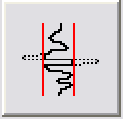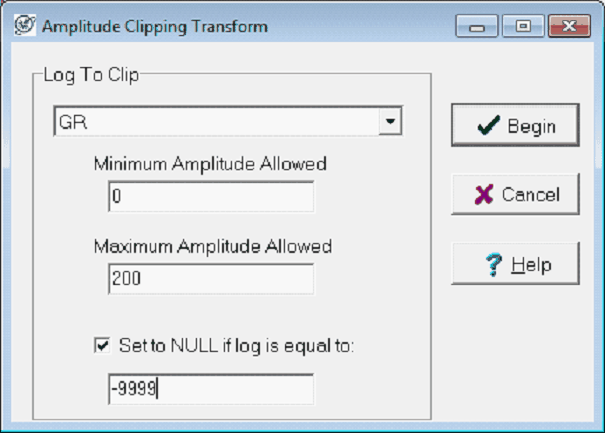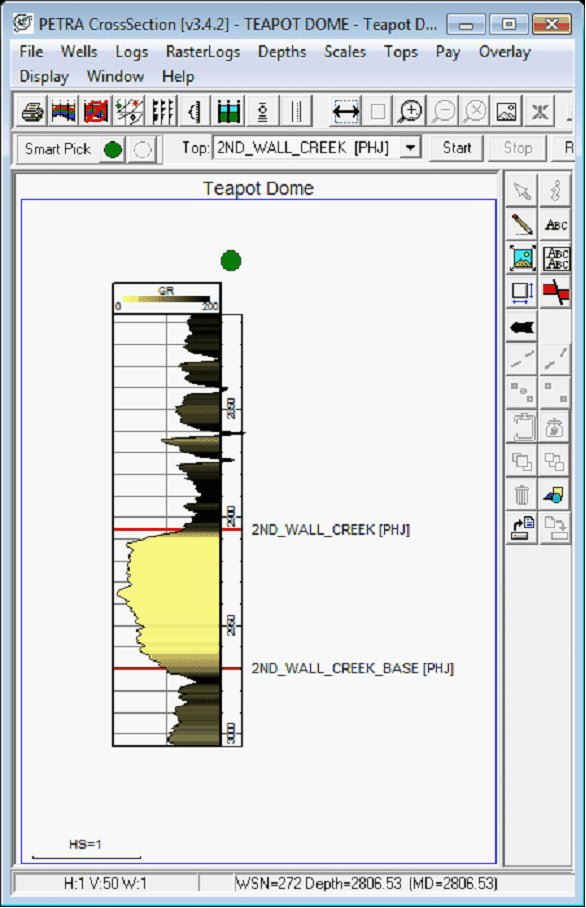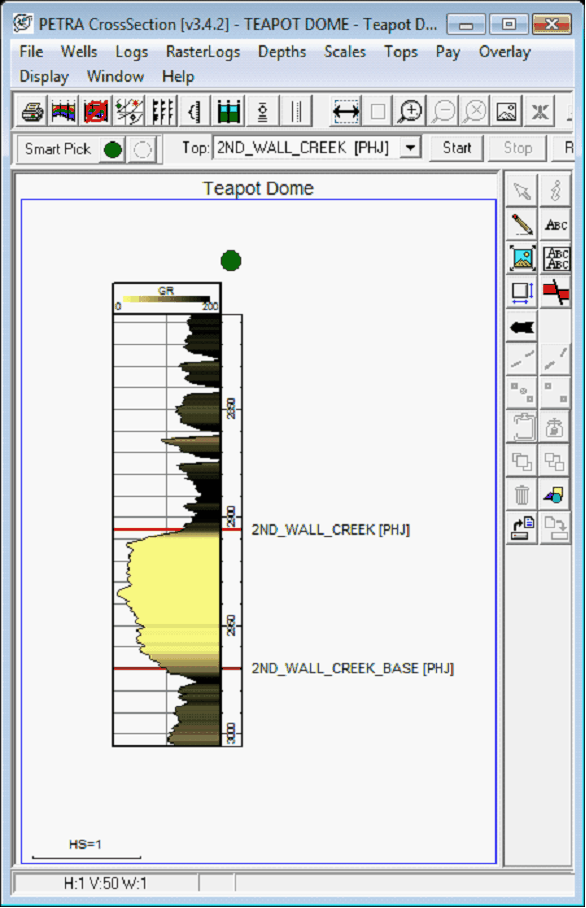|

This transformation clips spikes in the data outside a given minimum and maximum value. This transformation can also replace a specific data value with a null, which can be useful when curves contain non-standard null values (such as -9999 or 0 instead of the more common -999.25). This log transformation is available on the Advanced Transforms tool.

Log To Clip This dropdown selects the name of the log curve to be clipped. This option permanently changes the selected log curves, so its usually best to retain a backup set of curves and perform this operation only on a set of copied logs. In the example above, the GR curve is selected.
Minimum Amplitude Allowed This option sets the lower limit for clipping. Curve values below this value will be set to a null value. The default value of -1E30 is so low that Petra will not perform a minimum clipping. In the example above, GR values below 0 will be set to a null value.
Maximum Amplitude Allowed This option sets the upper limit for clipping. Curve values above this value will be set to a null value. The default value of -1E30 is so high that Petra will not perform a maximum clipping. In the example above, GR values above 200 will be set to a null value.
Set to NULL if log is equal to This option replaces a single value with a null value. Put another way, all log values equal to the entered data value will be converted to nulls. This option is most commonly used to correct data that was imported with non-standard null values like -9999 or 0. This function can be used independently of amplitude clipping.
In the example below, the original curve is on the left and the clipped curve on the right. Note that the gamma ray values in the clipped curve above 200 API and below 0 have been replaced with null values.


|